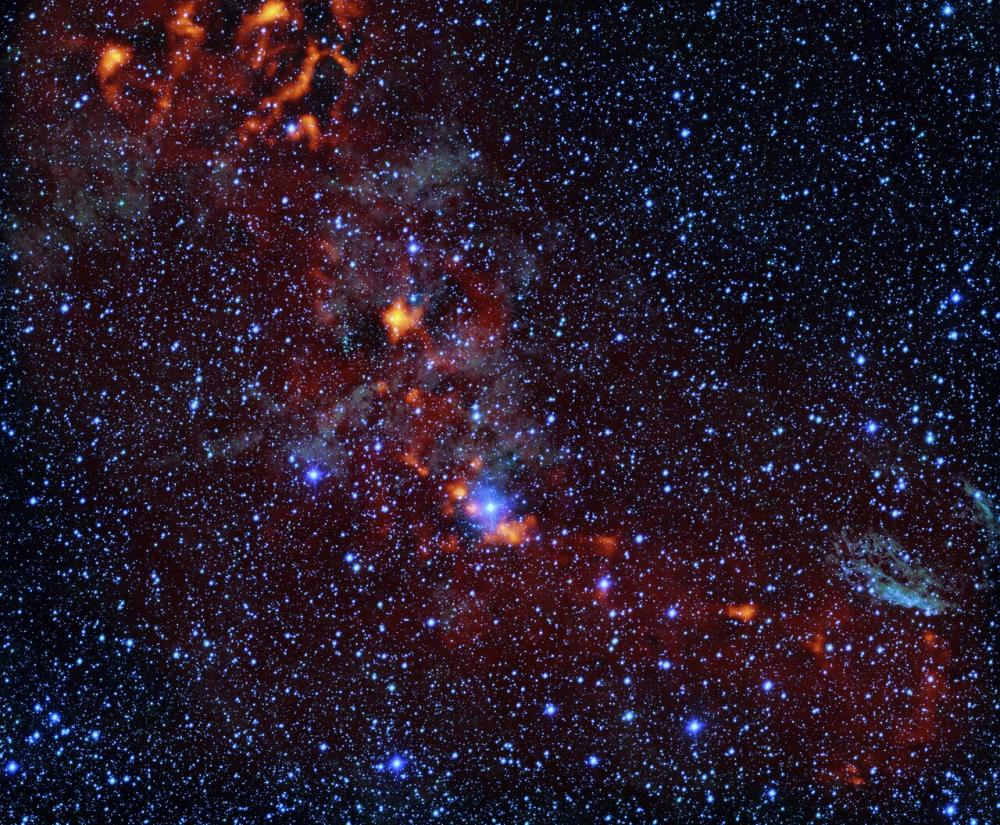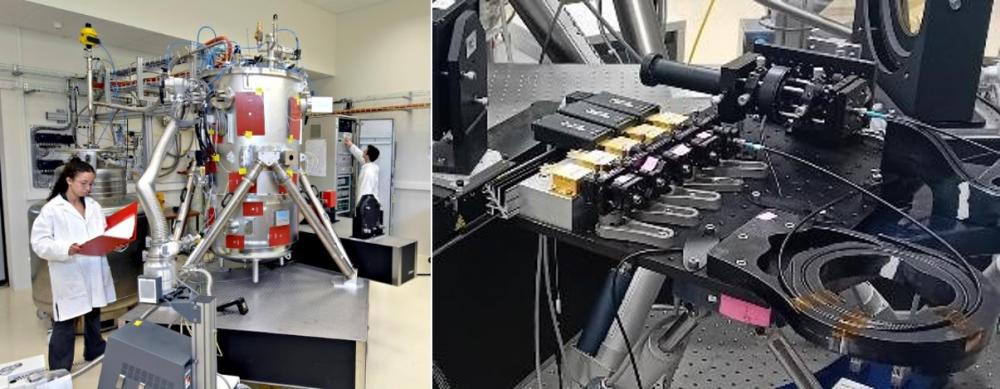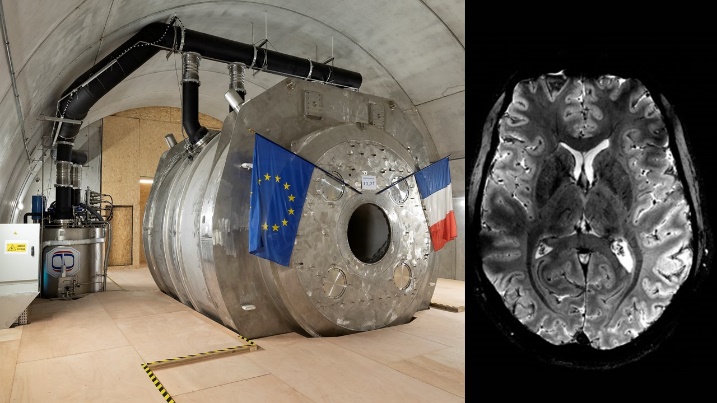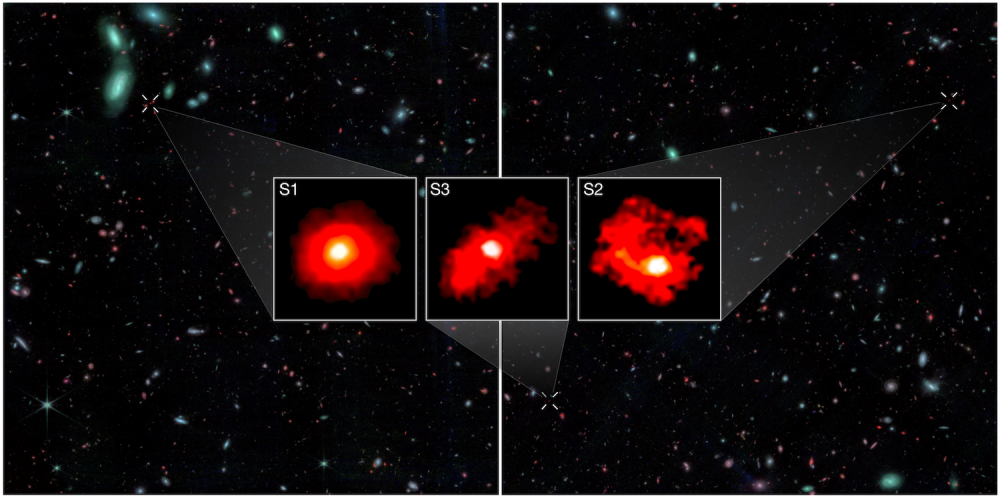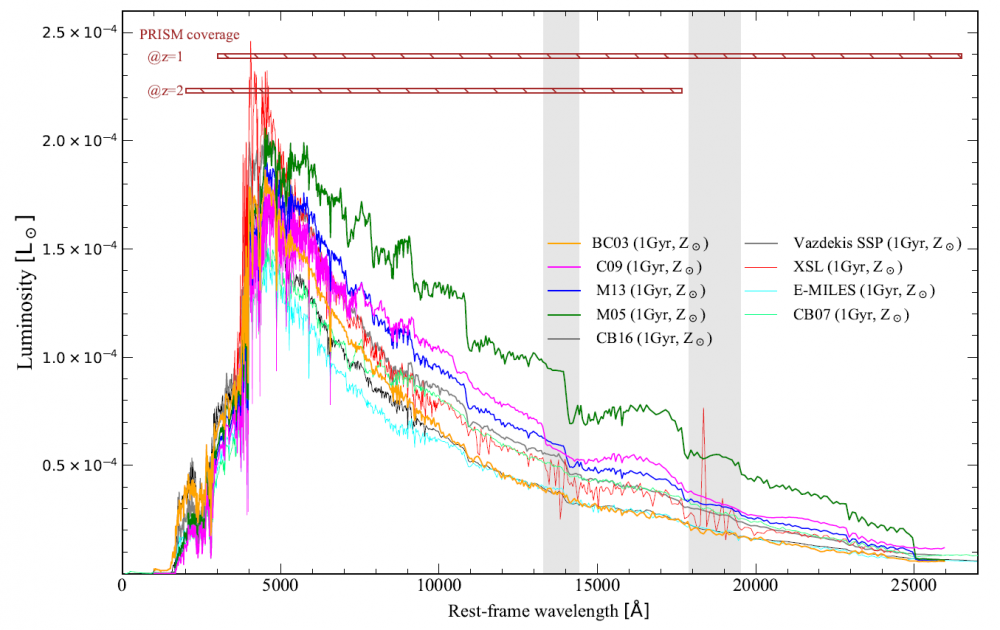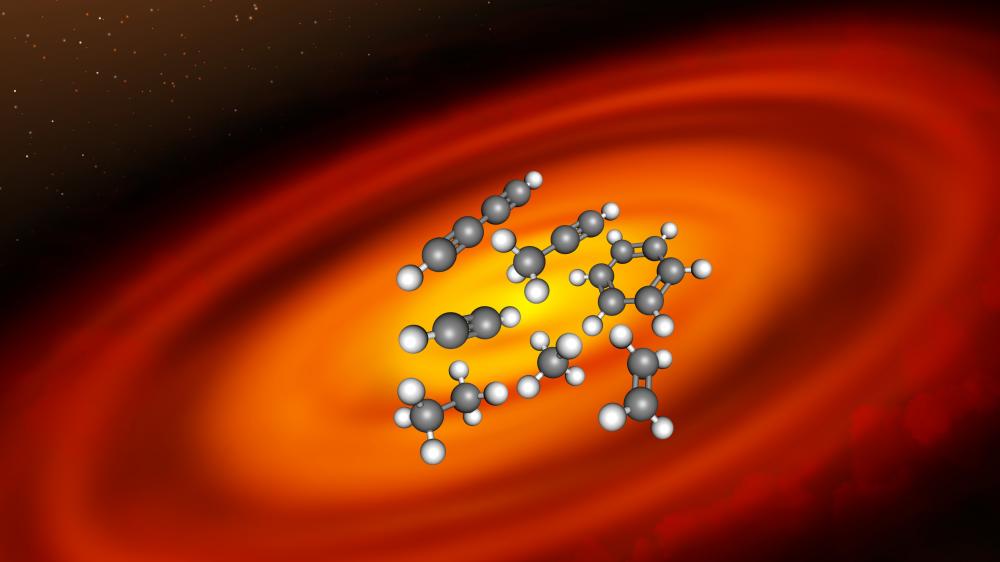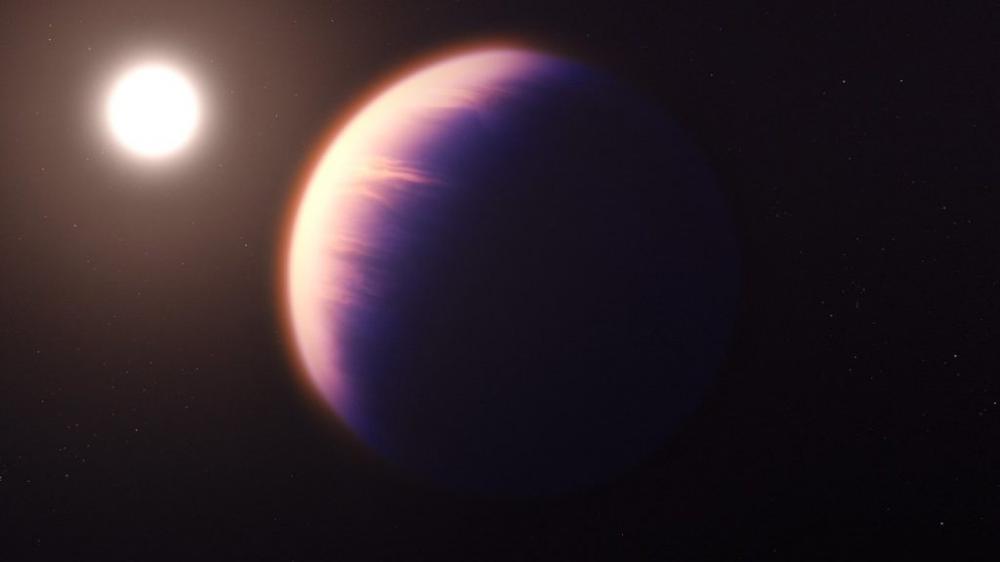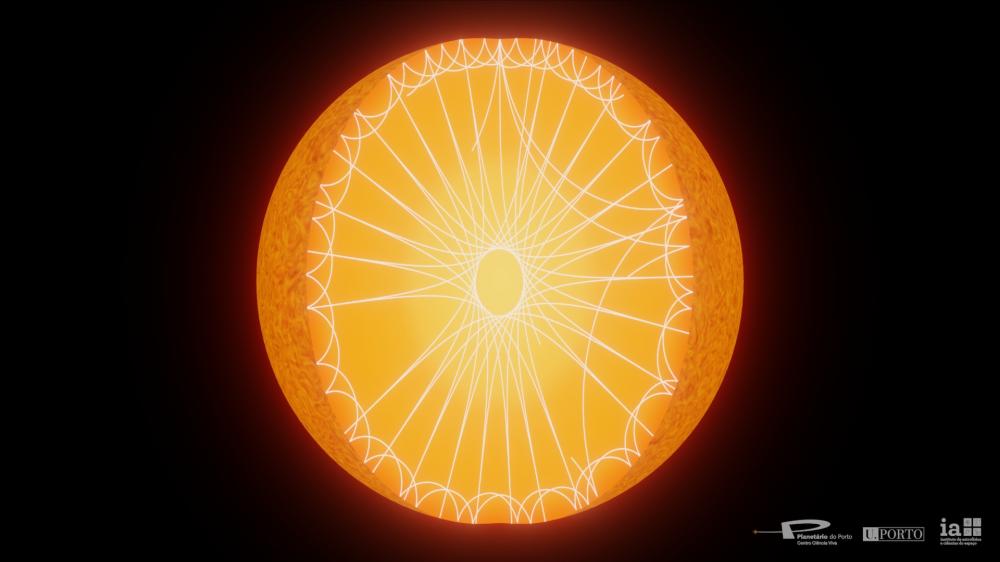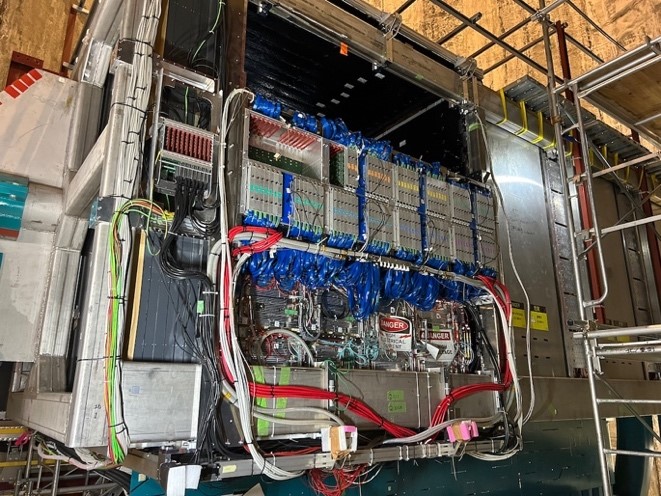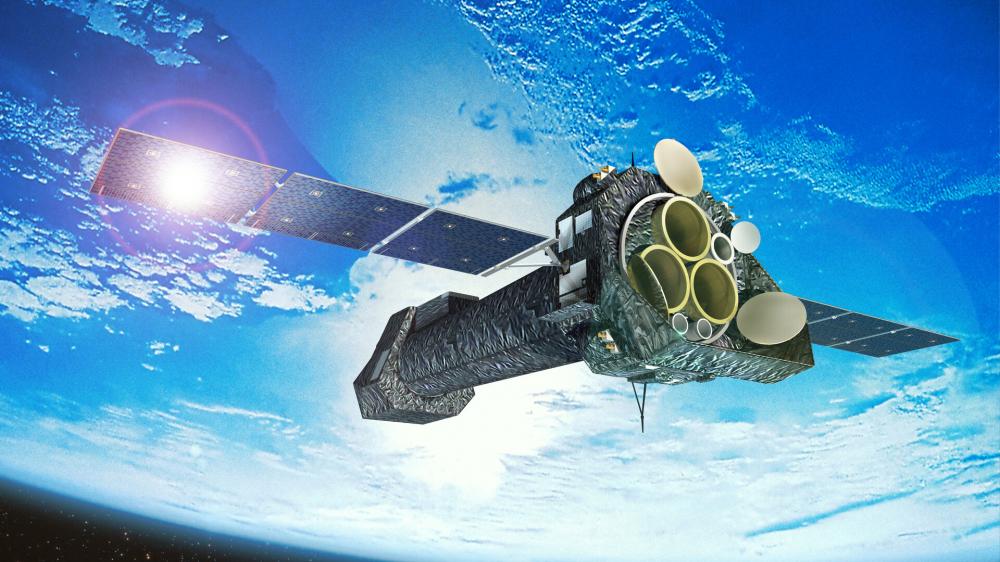Understanding star formation remains one of astrophysics' great mysteries. Only 1% of the dense molecular gas in galaxies transforms into stars, a phenomenon that scientists are still striving to explain, despite some advancements. As part of the CAFFEINE project, a research team from CEA – Paris-Saclay utilized the ArTéMiS camera on the APEX telescope in Chile to map massive molecular clouds at an unprecedented resolution at submillimeter wavelengths. Their findings reveal that star formation efficiency does not depend on the density of molecular gas beyond a critical threshold. This may be due to the way these denser clouds fragment into filamentary structures and gas globules, from which stars eventually form. Future studies, including observations from the James Webb Telescope and the ALMA interferometer, promise to deepen this understanding.
This study has been featured as the ESO Picture of the Week, and the results are published in the journal Astronomy & Astrophysics.
METIS is a first-generation instrument for the ELT, the Extremely Large Telescope currently under construction in the Atacama Desert in Chile, which will see its first light in 2028. Irfu has been involved in this instrument since 2018. In 2021, 14 cryomechanisms that will drive a dozen optical systems on the METIS instrument were delivered. METIS comprises two separate units: one for spectroscopy, the other for imaging. The latter contains coronagraphs, based on phase masks. The performance of the masks designed by the University of Liège has been optimised by measurements carried out on the astrophysics department's optical bench dedicated to infrared imaging. In April 2024, after 6 months of testing and performance optimisation, the three masks for N-band coronagraphy (7.5-13.5µm) were delivered to the METIS consortium. They will shortly be integrated into the instrument, which will enter the manufacturing phase in 2024.
The Iseult project has unveiled the first human brain images obtained using a 11.7 teslas MRI, after almost 25 years of work. This world first was made possible thanks to the commitment of over 200 CEA employees, who believed in this extremely ambitious project from the very beginning
In the early 2000s, a Franco-German project was launched to develop ultra-high resolution imaging. One of the objectives was to build an imager whose key component was a superconducting magnet reaching 11.7 Tesla with a 900 mm aperture, but there was at this time no MRI manufacturer ready to embark on this crazy adventure alone. Based on its strong expertise in superconducting magnets acquired over the past 40 years, in particular for high energy physics and particle physics (Cern) as well as for fusion (Tore Supra, ITER), CEA decided to take up the challenge. After only a few years of design work, CEA proposed in 2006 an initial design using several innovative technological solutions. After exhaustive tests to validate all of them with several prototypes, the final fabrication started in in 2010. It took 7 years for the CEA and Alstom (now General Electric) teams to finalize the construction of this outstanding magnet, a colossus weighing 132 tons, 5 me in length and 5 meters in diameter. The magnet winding is made of 182 km of superconducting wires cooled to -271.35°C by 7,500 liters of superfluid helium.
.
Is the Standard Model of cosmology, the basis of our understanding of the Universe since the Big Bang, in danger? Recent observations by the James Webb Space Telescope (JWST), carried out by an international team including the CEA-IRFU Astrophysics Department, have revealed massive galaxies in the young Universe, sparking a lively debate within the scientific community. While some researchers see this as calling the model into question, others argue that these galactic masses have been overestimated, suggesting that more precise measurements could resolve the enigma without invalidating the Standard Model. Thanks to the FRESCO programme, spectroscopic data that are more precise than previous measurements appear to reconcile these early galaxies with theoretical predictions. However, three extreme cases continue to challenge our understanding of galaxy formation.
Understanding the diverse stellar populations that make up galaxies is crucial to studying their formation over cosmic time. Nevertheless, some intractable stars continue to resist the modellers! Their complex nature and short lifetimes make stars in the asymptotic branch of thermally pulsating giants (TP-AGB) difficult to model, a subject of debate for decades. The James Webb Space Telescope is finally lifting the veil on their contribution to the spectrum of distant galaxies. These discoveries have implications for determining the age and stellar mass of galaxies, as well as for cosmic dust production and chemical enrichment.
This discovery has just been published in the prestigious journal Nature
An international research team, including scientists from CEA, has just revealed the chemical composition of a disk of matter rotating around a young star, where new planets are forming. The results reveal the largest number of carbonaceous molecules ever observed in such a disk, including some detected for the first time outside our solar system. These findings have implications for the potential composition of planets forming around this star. These results, published in the journal Science on Thursday June 6, were obtained as part of the guaranteed time program of the MIRI instrument, developed by a consortium of laboratories in Europe and the USA.
The James Webb Space Telescope has produced a new portrait of the atmosphere of exoplanet WASP-39b, a "hot Saturn" some 700 light-years away. After the first near-infrared observations in 2022, which revealed for the first time the presence of sulfur dioxide (SO2) in the atmosphere of an exoplanet, it was observed again in 2023, but this time in the far infrared, using the MIRI spectrometer. This new observation enabled the international research team, including Saclay's Astrophysics Department, to confirm the presence of this molecule in the atmosphere of WASP-39b and to constrain its abundance. This recent study demonstrates that photochemistry shapes the atmosphere of WASP-39b over a wide range of wavelengths.
To unravel this mystery, several teams with diverse skills from the Astrophysics Department had to come together, as the architecture that unites the star to its planet is highly complex. They had to combine a detailed understanding of stellar and planetary physics, exploring their interactions, with a thorough knowledge of the observations made by NASA's Kepler satellite to be able to decipher the data.
The study shows that the observed rarity seems to derive not from observational bias, but rather from physical causes. Tidal effects and magnetism are sufficient to explain qualitatively and quantitatively the migration of nearby planets around fast-rotating stars. Moreover, this migration appears to be dependent on the spectral type (fundamentally linked to mass) of the star. While these results are promising, it is nevertheless necessary to expand the sample size to better constrain scarcity and better understand the mechanisms at play. In particular, this study highlights the importance of considering the spectral type of stars (their masses) if we are to correctly model star-planet interactions.
This work is published in Astronomy & Astrophysics.
An international team, including the Astrophysics Department of CEA-Saclay, led by the Instituto de Astrofísica e Ciências do Espaço (IA), utilized one of the world's most advanced spectrographs to detect the smallest "stellar tremors" ever recorded in an orange dwarf star, making it the smallest and coldest star observed to date with confirmed solar oscillations. This study demonstrates that asteroseismology is a powerful technique for studying such stars, opening new perspectives in our understanding of stellar physics and, by extension, exoplanets.
This study is published in the journal Astronomy & Astrophysics Letters: “Expanding the frontiers of cool-dwarf asteroseismology with ESPRESSO: Detection of solar-like oscillations in the K5 dwarf ε Indi”.
With more than 5,000 scientists, engineers, technicians, administrators and students, CMS is one of the largest scientific collaborations in the world. With members from more than 240 institutes and universities in nearly 50 countries around the world, the collaboration exploits the data provided by the CMS experiment, one of the two giant general-purpose detectors installed along the circumference of the LHC, CERN's Large Hadron Collider.
Gautier Hamel de Monchenault, a physicist in the particle physics department at CEA-IRFU, was elected on Monday 12 February 2024 as the spokesperson for the CMS collaboration at CERN. He will hold this prestigious position from 1 September 2024 to 31 August 2026. He will be the 10th spokesperson for the CMS collaboration and the second French spokesperson to lead one of the four LHC experiments.
These intense years will see the end of the third data-taking period of the LHC as we know it, and the start of the installation of detector upgrades in preparation for the high-luminosity HL-LHC data, as well as the update of the European particle physics strategy.
On January 17, the T2K collaboration announced the launch of the second phase of its experiment, as stated in a press release. This phase will exploit an upgrade of the beam, whose nominal power has been increased from 450 kW to 710 kW, with the aim of reaching 1.2 MW by 2027. An improved version of the experiment's near detector ND280 is also being implemented, incorporating new time-projection chambers using resistive-Micromegas technology designed and developed by the IRFU teams. The aim of this second phase is to collect more than twice the neutrino statistics recorded during the previous phase by 2027, and to reduce the uncertainty in the measured neutrino interaction rate by a factor of two. The aim is to achieve a statistical significance of 3σ on the violation of Charge-Parity (CP) symmetry, in the event of maximum CP violation, as suggested by the results of the first phase of T2K. The discovery of CP symmetry violation in the lepton sector could explain one of the most fundamental mysteries of modern physics: the matter-antimatter asymmetry observed in the Universe.
XMM-Newton's energetic universe joins forces with the Euclid satellite's vision of the sky. A thousand hours of X-ray observations, over a region 40 times the size of the moon, will complement multi-wavelength studies of the cosmic evolution of galaxy clusters. A decisive association to constrain cosmological scenarios and reveal the nature of dark energy.

